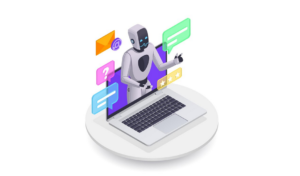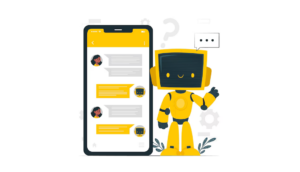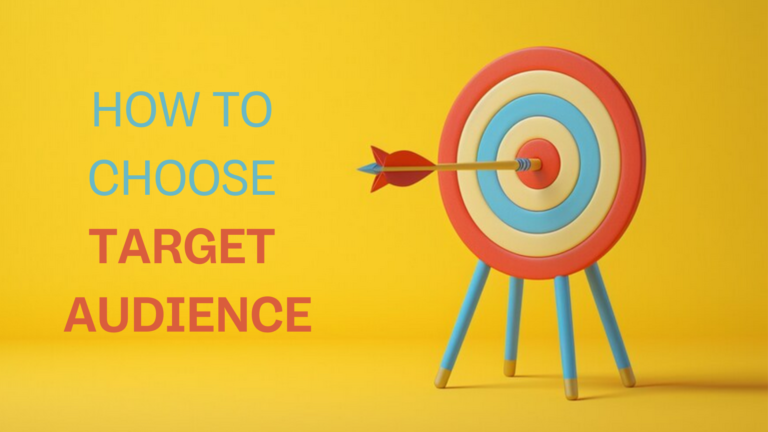Date of publication:
07 Feb. 24How To Use Bots To Improve Your Marketing Campaigns
The use of bots in marketing is becoming increasingly popular. Chat bots, in particular, can greatly improve the marketing campaigns of almost any business. Here’s how exactly this is happening.
What Marketing Bots Are And How They Work
Marketing bots are special programs that perform various marketing tasks automatically. Their main advantage is the ability to automate routine processes, saving time and money for companies.
The main functions of such bots include interaction with users through chats, sending emails and SMS, collecting and analyzing data, publishing content in social networks, and so on.
As for the principles of marketing bots, they are based on artificial intelligence and machine learning technologies. Simple bots act according to predefined algorithms and scenarios. Smarter ones can analyze user behavior, learn from this data, and subsequently issue personalized recommendations and responses.
In addition, modern marketing bots are able to integrate with various external platforms – CRM, ERP and so on. This significantly expands their functionality and areas of application in marketing.
Types Of Marketing Bots

There are many varieties of marketing bots, which are commonly categorized according to several key features.
- Live chat bots for real-time communication. This is the most common type of marketing bots. They work in messengers, social networks, websites and allow you to dialog with users 24/7. Chat bots can answer questions, give consultations, take orders. This is a convenient channel for customer support and brand promotion.
- Bots for email and SMS newsletters. These bots are designed for full automation of mass email and SMS mailings. They independently form lists of addressees, generate mailing content, track analytics. They are used to promote promotions, news, events.
- Personalized bots. These bots use information about customers from CRM to send personalized offers, recommendations, reminders. For example, they can inform about a discount on goods of a certain category. They increase loyalty.
Benefits Of Using Bots In Marketing
Marketing bots provide companies with a huge number of benefits, allowing them to significantly improve the efficiency of marketing campaigns and business processes:
- Automation of routine tasks. Bots can work around the clock, performing such tasks as sending out emails and SMS, publishing posts in social networks, segmenting the customer base. This saves marketers’ time.
- Round-the-clock customer support. Chatbots and voice bots provide instant answers to customer queries 24/7.
- Interaction personalization. Using customer data, bots can send personalized suggestions and recommendations. For example, inform about products that match a customer’s previous purchases.
- Increased audience reach. Bots allow you to scale your marketing campaigns without increasing your budget. They can independently search for and attract new subscribers.
- Analyzing customer behavior. Marketing bots collect valuable data as they interact with customers, providing insights to improve business.
Thoughtful integration of marketing bots into a company’s strategy opens new horizons for improving business metrics and automating routine tasks.
Ways To Use Bots To Improve Marketing Effectiveness
Marketing bots provide many opportunities to solve critical business problems and improve the efficiency of marketing activities of companies. Here are the main ways to use them:
- Attracting new customers. Bots can be used in advertising campaigns to generate traffic and leads. For example, a chatbot on a website or social network can offer to subscribe to an email newsletter in exchange for a discount.
- Increased sales. Bots allow you to set up automatic segmentation of the customer base and send personalized offers with promo codes and discounts on products of interest to the customer. This can significantly increase conversion rates.
- Increasing customer loyalty. Bots can be used to set up automatic mailings of useful content, reminders, holiday greetings, which improves CX and brand attachment. CX is an abbreviation for Customer Experience, which means “customer experience.” Customer Experience is a set of impressions and emotions that a customer gets while interacting with a company and its products or services.
- Preference data collection. Bots can conduct surveys, polls, or offer to subscribe to mailing lists based on interests. This allows you to get to know your audience better.
- Autolistings. Bots allow you to fully automate the sending of emails and SMS about new products, promotions, company events. This saves marketers’ time.
Thus, with the help of bots you can comprehensively solve the tasks of attracting and retaining customers, increasing loyalty, data collection, automation of routine processes. This gives a powerful impetus to business development.
Recommendations For Integrating Bots Into Marketing Campaigns

To effectively integrate marketing bots into your campaigns, it is very important to tightly integrate bots with your CRM system so that they have access to all necessary customer data. This will allow you to set up personalized interactions and automate maximum processes.
Bots should have a recognizable design in the brand’s corporate style. This will improve the company’s image and trust in the bots. Before launching, you should thoroughly test their work to avoid mistakes. Testing should be done on a regular basis. It is very important to qualitatively train bots on real dialogs so that they give the most accurate answers to customers. This is a key point.
It is necessary to regularly collect feedback from customers about the work of bots and optimize them based on this feedback. Take into account the opinion of real users.
By following these recommendations, you can implement bots as efficiently as possible and get the most out of them for your business.
What Metrics To Analyze When Using Bots
To evaluate how effectively marketing bots work and optimize them, you should regularly analyze key metrics.
- Percentage of bot responses to user queries. This metric indicates how completely and accurately the bot answers questions. The higher the percentage, the better.
- Average bot response time. Customer satisfaction with the speed of service depends on this factor. It is desirable to answer in no more than a few seconds.
- Conversion from a dialog with the bot into a target action (purchase, subscription, registration). This is a key indicator of bot efficiency.
- Evaluation of customer satisfaction after communicating with the bot. You can conduct surveys or analyze feedback.
- Frequency of user’s requests to the bot. If customers are actively communicating, it means the bot is solving their problems.
Regular monitoring of these metrics will allow you to understand how the bot copes with the set goals and what needs to be improved in its work. This is a key way to optimize bots.
Risks And Challenges With Automated Bot Responses
Companies face a number of risks when implementing marketing bots. These include the possibility of incorrect bot responses due to errors in their logic. There is also the risk of losing control of the customer experience when communicating with an automated system.
Personalization errors can occur due to incorrectly collected or analyzed customer data. In addition, improper targeting of bots by marketers is fraught with problems.
- Collecting irrelevant or erroneous customer data. This can lead to incorrect recommendations from the bot.
- Incorrect analysis of user data. The bot may draw incorrect conclusions about customer interests and preferences.
- Incorrect setting of personalization algorithms. Due to errors in logic, the bot will produce irrelevant results.
- Incorrect setting of goals for personalization by marketers. The bot will aim for the wrong KPIs.
- Outdated customer data if updates are not set up.
- Lack of a long-term training strategy for bots will reduce their effectiveness over time.
Considering these key factors will help minimize risks when implementing bots.
Creating And Training Marketing Bots

To create an effective marketing bot, you need to follow these key steps:
- Select the optimal platform and user interaction channels. At this stage it is important to evaluate the capabilities of different bot-building platforms, analyze where your users communicate (messengers, website, social networks), and choose the most appropriate channels.
- Qualitatively train the bot on real dialogs and questions of users. This is a critical stage, which determines how accurately and completely the bot will respond to customers. You need to collect data on typical dialogs and train the bot on them using special tools.
- Thoroughly test the bot’s work before launching it. It is necessary to identify all possible errors, check the bot’s reactions to various requests, and make sure that the responses are correct. Testing should be performed regularly even after launch.
Following these steps, you can create a highly efficient marketing bot that will effectively solve the set business tasks.




